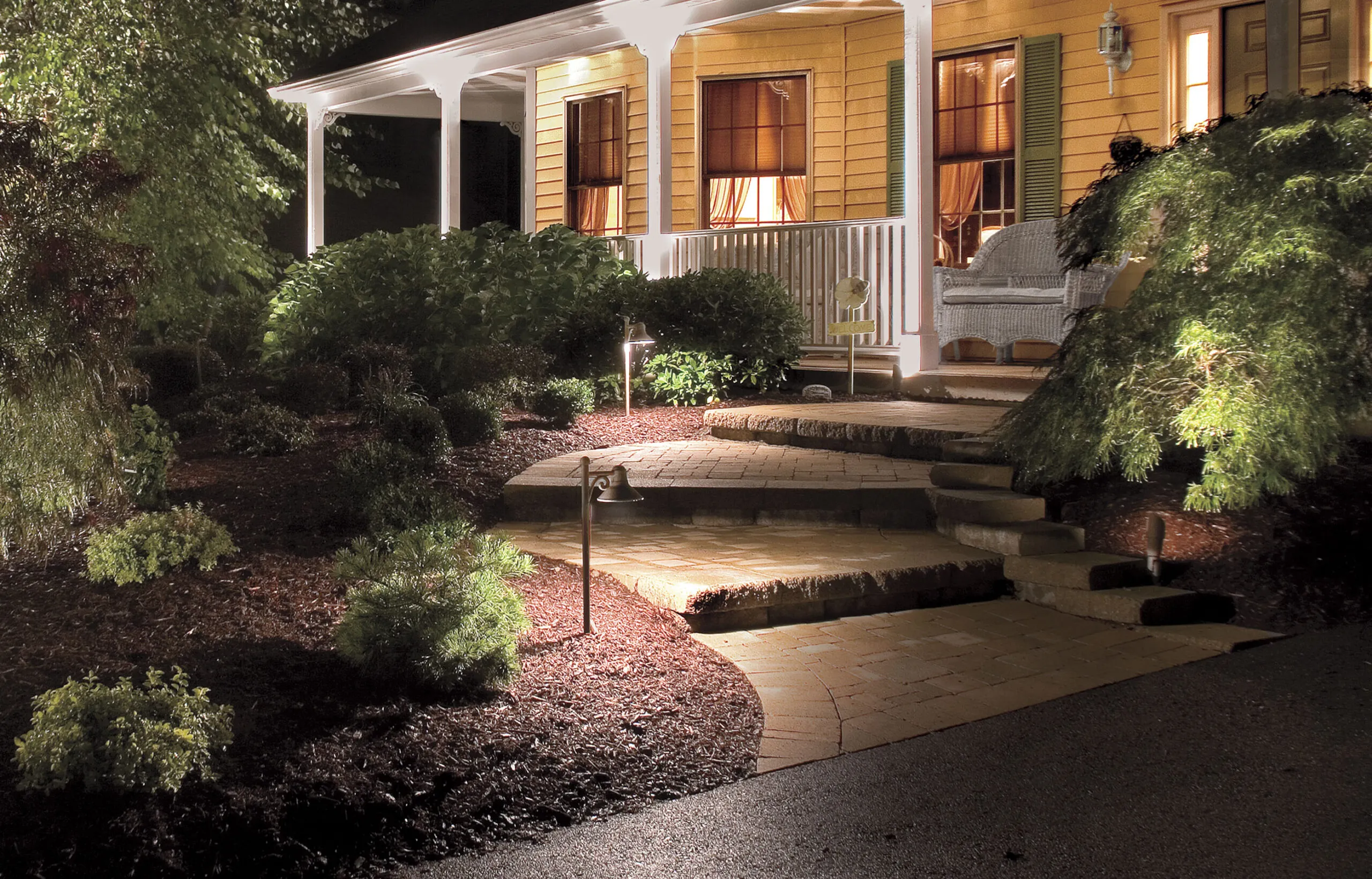Path lighting creates a welcoming atmosphere by illuminating walkways, stairs, and garden paths while preventing accidents in the dark. Whether you’re looking to highlight architectural features, guide guests to your front door, or simply enjoy your garden after sunset, the right path lighting can transform your property. This guide will help you select, plan, and install the perfect lighting for your paths.
Types of Path Lighting Fixtures
There are several types of path lighting fixtures, each suited to different areas and purposes . Here are some of the most common types.
Step Lights
Step lights are small fixtures designed to illuminate stairs and changes in elevation. They can be installed directly into risers or atop nearby walls, providing targeted illumination to prevent trips and falls.
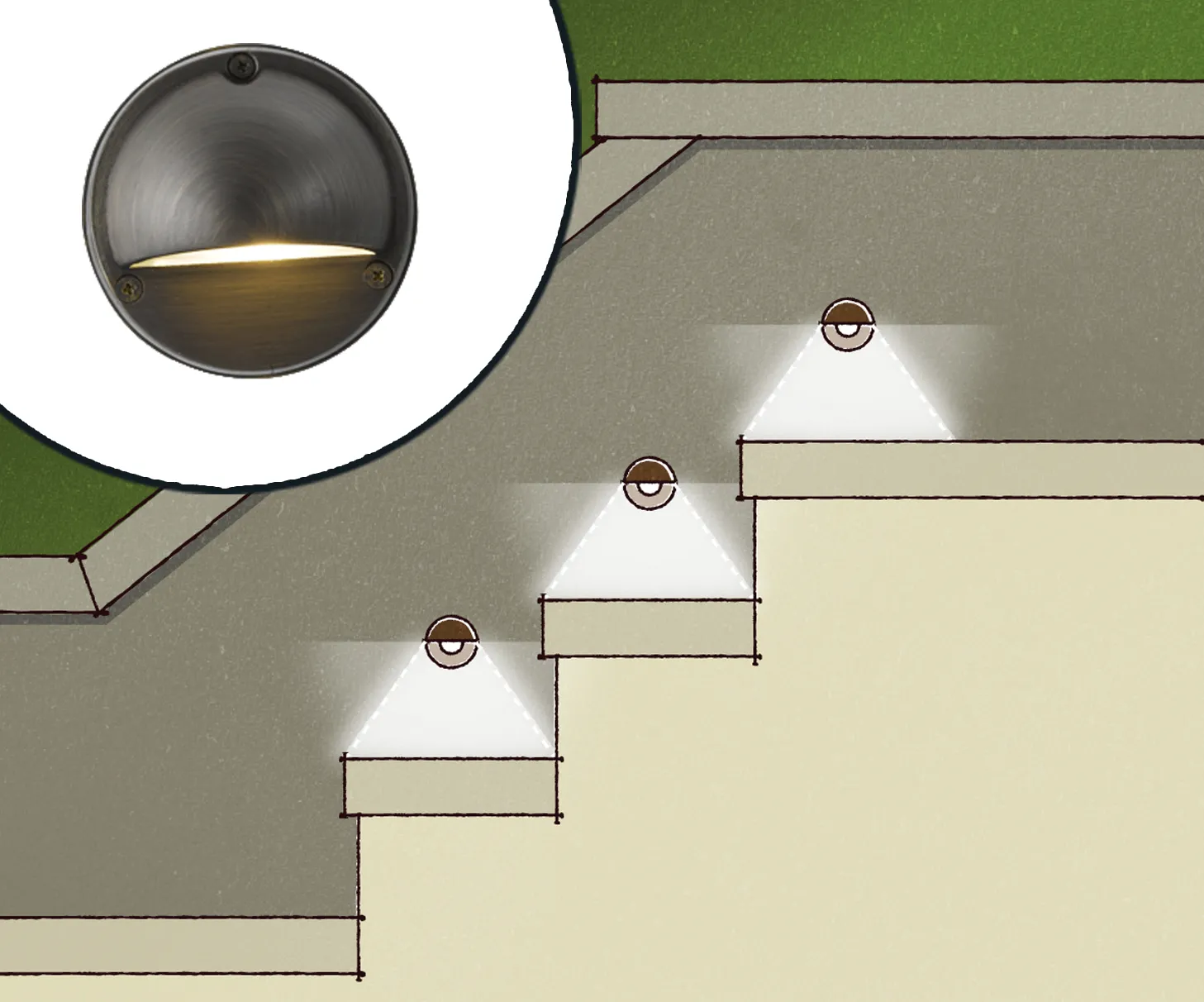
Path Lights
Path lights are the most common type of fixture for walkways. These standalone units are typically stake-mounted, making them relatively convenient ground installations. They project light downward, creating pools of illumination along your paths.
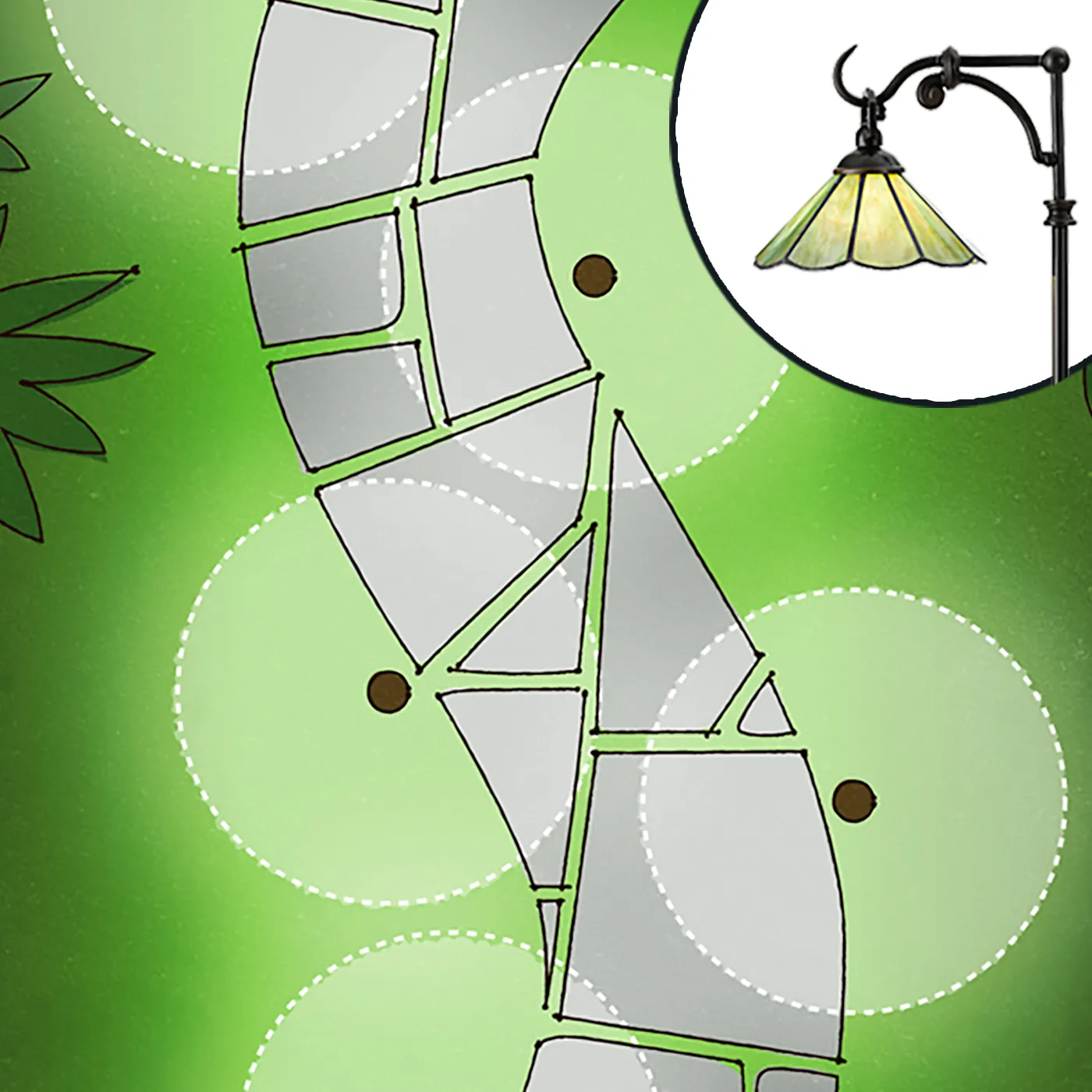
Downlights
Downlights are installed high up, often in trees or on structures, to create a moonlight effect. They provide a soft, natural-looking glow over a larger area, perfect for illuminating longer stretches of pathway.

Solar Lights
Solar lights are an eco-friendly option that harnesses the sun’s energy to power LED bulbs. While they offer easy installation without wiring, their performance can vary depending on sunlight exposure and weather conditions.
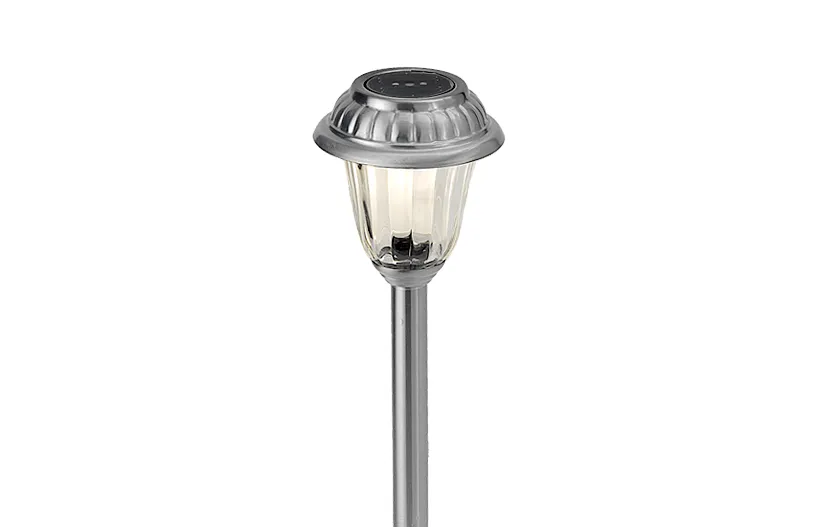
Factors To Consider When Choosing Path Lighting
We recommend considering the following factors when choosing your path lights.
Brightness and Lumens
The brightness of your lights, measured in lumens, should be appropriate for the area. For path lighting, fixtures between 100 and 200 lumens are typically sufficient. Brighter isn’t always better, as overly bright lights can create harsh glare and discomfort.
Color Temperature
Color temperature, measured in Kelvin (K), affects the mood of your lighting. Warmer temperatures (2700K–3000K) create a cozy, inviting atmosphere, while cooler temperatures (3500K–4000K) provide a crisper, more modern look.
Energy Efficiency
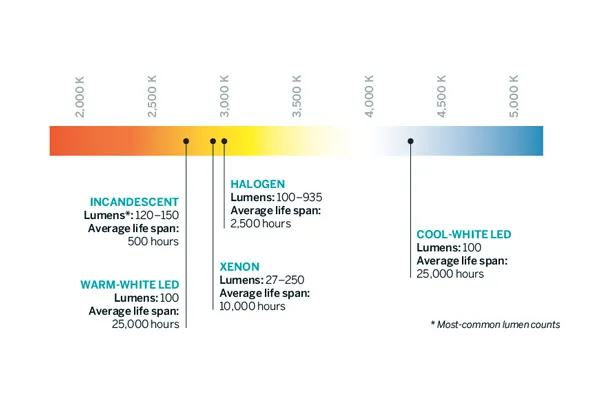
Energy-efficient fixtures, and LED lights in particular, can significantly reduce your electricity costs and environmental impact. Look for ENERGY STAR-certified products for the best efficiency.
Durability and Weather Resistance
Outdoor lighting fixtures must withstand various weather conditions. Look for fixtures made from durable materials like brass, copper, or high-quality aluminum with weather-resistant finishes.
Selecting the Right Bulb Technology
The type of bulb you choose affects the quality of light, energy efficiency, and longevity of your path lighting system.
LED Bulbs
LED bulbs are the most energy-efficient option, lasting up to 25,000 hours while consuming up to 75% less energy than traditional bulbs. They’re available in various color temperatures and are ideal for most path-lighting applications.
Halogen Bulbs
Halogen bulbs offer a warm, bright light similar to traditional incandescent bulbs but with improved efficiency. They’re less expensive upfront but have a shorter lifespan compared to LEDs.
Planning Your Path Lighting Layout
To make the most of your outdoor lighting, we recommend following the tips below.
Spacing and Positioning
Generally, you should place path lights 10 to 15 feet apart, creating gentle pools of light that guide the way. Stagger lights on both sides of wider paths for a more balanced look.
Create Focal Points
Use lighting to highlight key landscape features or architectural elements along your paths. Accenting in this way adds visual interest and depth to your nighttime landscape.
Avoid Common Mistakes
Avoid over-lighting, which can create a harsh, unappealing effect. Also, be mindful of light pollution by using fixtures that direct light downward and away from neighbors’ properties.
Essential Components of a Path Lighting System
Here’s an overview of every major path lighting component.
Low-Voltage Transformers
Landscape lighting transformers reduce household voltage to a safe 12 volts for low-voltage lighting systems. Choose a transformer with enough wattage to power all your fixtures, plus about 20% extra for future expansion.

Cables and Connectors
Low-voltage cables carry electricity from the transformer to your fixtures. Use high-quality, weatherproof connectors to ensure safe and reliable connections.
Timers and Sensors
Automatic timers and photocell sensors can control when your lights turn on and off, saving energy and providing convenience.
DIY Installation Guide
Installing path lighting can be a rewarding DIY project. Here’s a basic guide to get you started.
Tools and Materials Needed
- Path light fixtures
- Low-voltage transformer
- Low-voltage cable
- Cable connectors
- Shovel or edger
- Wire strippers
- Voltmeter
- Outdoor GFCI outlet (if not already installed)
Step-by-Step Installation Process
- Plan your layout and mark fixture locations.
- Install the transformer near an outdoor GFCI outlet.
- Lay out the low-voltage cable along your planned path.
- Connect the cable to the transformer.
- Install the light fixtures and connect them to the cable.
- Bury the cable about 3 inches deep.
- Test the system and adjust fixture positioning as needed.
Troubleshooting Tips
- If the lights flicker or seem too dim, check for loose connections or voltage drops over long cable runs.
- Ensure the transformer is sized correctly for your total wattage.
- Use a voltmeter to check the voltage at each fixture, aiming for 10–12 volts.
Professional Installation vs. DIY: Pros and Cons
While choosing to do DIY installation can save you money, professionals often offer design services. When deciding between doing it yourself and hiring an electrician, consider your skill level, available time, and the project’s complexity.
Maintenance and Upkeep of Path Lighting
Regular maintenance ensures your path lighting system continues to perform optimally for years.
Regular Cleaning and Inspection
Clean fixtures periodically to remove dirt and debris. Inspect wiring and connections annually for signs of wear or damage.
Replacing Bulbs and Batteries
Replace bulbs promptly when they burn out to maintain consistent lighting and prevent strain on other fixtures. For solar lights, replace rechargeable batteries every one to two years.
Winterizing Your Lighting System
In colder climates, ensure fixtures are clear of snow and ice. Consider using frost-resistant fixtures in areas prone to harsh winters.
Enhancing Your Landscape with Creative Lighting Techniques
Elevate your path lighting design with these creative techniques to add drama and interest to your landscape.
Moonlighting Effect
Place downlights high in trees to create a soft, natural moonlight effect over paths and garden areas.
Silhouetting
Position lights behind plants or structures to create dramatic silhouettes against walls or fences.
Grazing
Use lights close to textured surfaces like stone walls or tree bark to highlight interesting textures and create depth.
Budget Considerations: Balancing Cost and Quality
Path lighting costs can vary widely based on the quality of fixtures, system complexity, and installation method. While opting for the cheapest options is tempting, investing in quality fixtures and professional installation can save you money in the long run through improved durability and energy efficiency.
